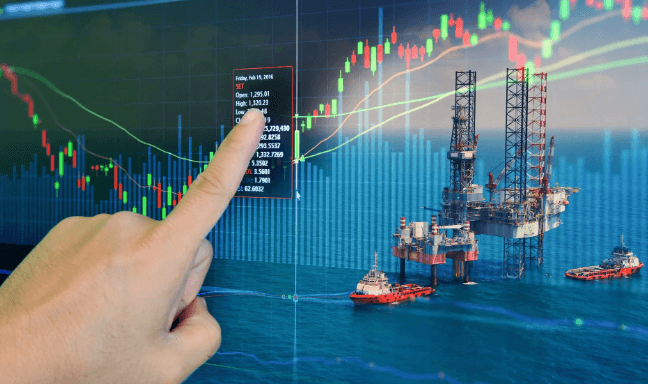3 Steps to Get Better At Oil Trading: A Comprehensive Guide

Navigating the volatile oil market requires a blend of sharp analysis and strategic planning. This guide demystifies the essential steps to refine your oil trading skills, from market analysis to risk management and strategy development. Apart from the crypto trading market, read this guide to Oil Trading and digital transformation. Read on!
In-depth Market Analysis
An in-depth market analysis is essential for anyone looking to excel in oil trading. It begins with understanding the myriad of economic indicators that can impact oil prices. Traders need to stay abreast of geopolitical events, inventory data, OPEC decisions, and the shifting tides of supply and demand.
Alongside fundamental analysis, technical analysis is a powerful tool in a trader’s arsenal. By studying chart patterns and a variety of technical indicators, traders can gauge market sentiment and make predictions on future price movements. It’s a skill that combines the art of interpretation with the science of statistics.
A comprehensive market analysis isn’t complete without an understanding of the macroeconomic environment. Interest rates, economic growth rates, and the strength of the dollar are all interconnected with the performance of oil prices. A robust strategy takes into account the bigger picture, including the underlying economic health of consumer countries that drives demand for energy.
Deep market analysis in oil trading is like putting together a complex puzzle. Each piece, whether it be a geopolitical event or an economic report, has the potential to complete the picture of where the market is heading. Mastery of this analysis is what separates the proficient from the novice, laying a foundation for informed, strategic trading decisions.
Risk Management in Oil Trading
Effective risk management is the backbone of sustainable oil trading. It begins with the establishment of a clear and comprehensive risk management plan, which outlines the acceptable level of risk and the measures in place to mitigate it. Key to this plan is the judicious use of stop-loss orders and limit orders, which serve to protect traders from market volatility and limit potential losses.
Understanding leverage and its implications is another crucial aspect of risk management. While leverage can amplify gains in oil trading, it can also magnify losses. Traders must be aware of the margin requirements and the risks involved with borrowing capital to trade. It is imperative to use leverage with caution and always within the bounds of one’s risk tolerance and trading plan.
The volatility of the oil market requires traders to be vigilant and responsive. Adapting to market changes and being willing to adjust strategies when necessary can mean the difference between a successful trade and a costly loss. Risk management is not a one-time setup but a dynamic process that requires ongoing assessment and adjustment. By staying disciplined and keeping a close eye on market movements, traders can navigate the complexities of the oil market and work towards achieving their trading objectives with measured risk.
Develop a Trading Strategy
Developing a trading strategy in oil trading is an intricate process that demands a thorough understanding of both the market and one’s personal trading style. It’s about making informed decisions on whether to engage in short-term day trading, with its rapid turnover and the potential for quick profits, or to opt for long-term position trading, where the focus is on the bigger picture and investments are held over a longer period.
A robust trading strategy also involves the incorporation of both technical and fundamental analysis, enabling traders to make decisions based on a comprehensive view of market conditions. It’s a blend of looking at the hard data from charts and interpreting broader economic indicators. This dual approach helps in formulating a nuanced strategy that can adapt to the oil market’s frequent fluctuations.
Read also Applify: Revolutionizing the Mobile App Development Landscape
Furthermore, the strategy must be flexible. The oil market is famously sensitive to both micro and macroeconomic factors, political events, and even natural disasters. A fixed strategy can become obsolete overnight with the emergence of unexpected events. Hence, an adaptive trading strategy is not just about sticking to a plan; it’s also about being prepared to modify that plan in the face of new information, ensuring that the approach remains relevant and effective in a dynamic trading environment.
Developing a trading strategy for oil trading is an ongoing exercise in balancing detailed analysis with the adaptability to respond to an ever-changing market. It requires discipline, a deep understanding of the market mechanisms, and an ability to remain detached and objective, making decisions based on evidence rather than emotion. With these elements in place, a trading strategy can provide a solid framework for navigating the complexities of the oil market.
Conclusion
Mastering oil trading is an art honed through informed strategies and steadfast risk management. Embrace continuous learning and adaptability to navigate the market’s ebb and flow successfully.





